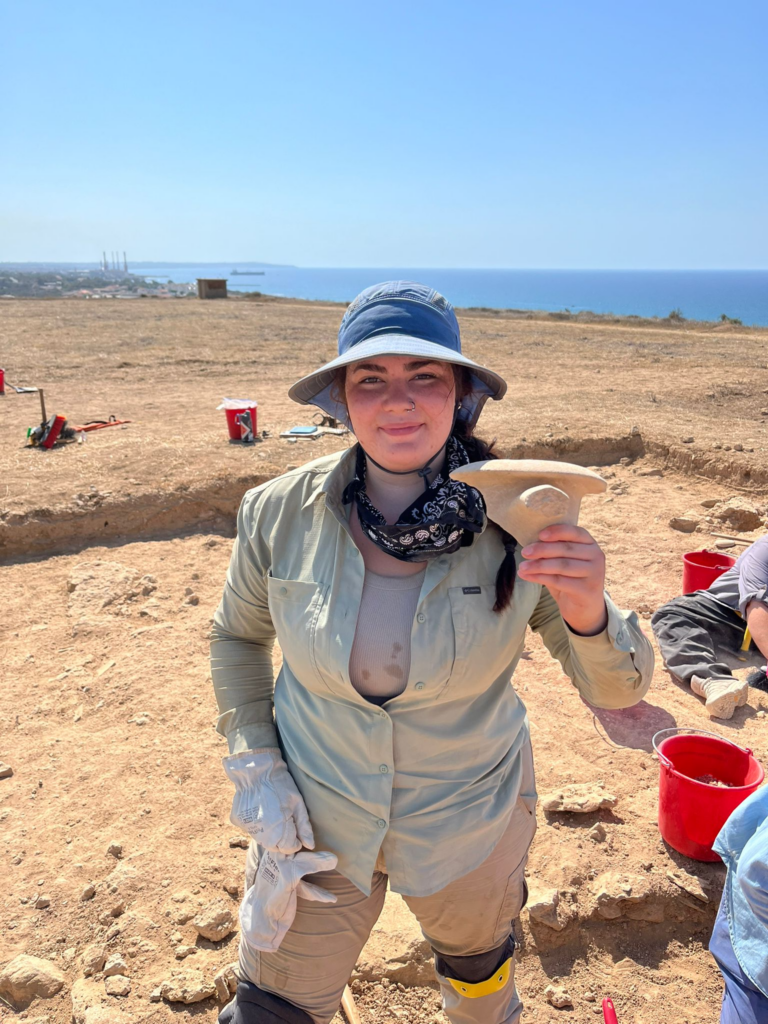Kayra Lyons:

This week, we picked up where last year’s students left off, beginning excavations and getting the ball rolling. I have been working primarily in Excavation Unit 25, along with two other Reed Students, Emi Clarke and Parker Miraldi. Day after day, we have begun to uncover artifacts and special features like walls and basalt slabs that give answers, but also make our excavation more confusing. Although the heat has definitely been an adjustment, after a few days the excitement over the artifacts we begin to find makes you forget how hot you are.
After a quick stop at the group’s favorite bakery Zorba’s, we make our 5am ascent to the plateau in Pyla. I have really enjoyed the beautiful view of the city, as well as the magnificent sunrise climbing the hills. One of our most memorable mornings was when we woke up to humidity so thick that we had to use windshield wipers the whole way on the drive to site. When we arrived on the plateau, the sunrise view and cityscape that we usually admire before beginning excavation was covered by a thick fog. The ground was even slightly damp. The air was so thick, breathing in the heat became a chore.
I didn’t anticipate finding anything of note so quickly, but I was proven wrong right at the beginning of excavation. We have found about a total of 150 beads in all sections of our trench at the first 5-10 cm we dug down. At first we were so excited to find each individual bead but by the last 50, it was just bewildering. We had heard that no other trench in any of the previous excavations had found nearly as many beads, especially concentrated in such a small area. I can’t even imagine how many beads or bead fragments we didn’t catch, hidden in the dirt. It was also so interesting to see necklaces made with the same kind of beads that we were finding on display in museums.

finding. [n.b. from Tom: same type of shell beads here as from EU25, but these are from a much, much earlier period, by several thousand years.]
Something that has struck me about this process that I did not expect was how many senses you use while digging. I learned that to find out if something is bone, you can lick it, and it will stick to your tongue, and if it’s a rock or pottery, or something similar looking, it won’t [n.b. from Tom: though this is true, I don’t encourage bone licking]. Another unexpected sense that I have engaged through digging is the touch aspect. While using a small pickaxe one of the key ways you can tell what is under the dirt you are digging up is feeling the material that you might hit, or the texture of the soil that you are digging through. Any change in either of those things indicates something significant about the area you are excavating.

